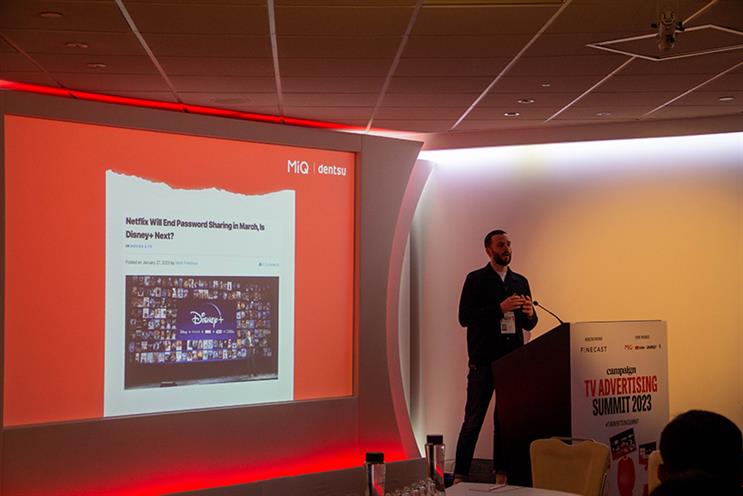
Free streaming TV platforms are having a moment – they are growing in popularity as the cost-of-living crisis leads more people to cancel subscription services such as Netflix, Amazon Prime and Disney+.
But the advertising industry is yet to be convinced, according to John Thomson, chief revenue officer at MiQ and Rob Powell, account director at Amplifi UK.
Speaking at Campaign’s recent TV Advertising Summit, they explored the growth of AVOD – platforms that allow people to watch content on demand in exchange for viewing ads and FAST – platforms with scheduled programming and ads.
“AVOD and FAST is where something really interesting and exciting is going on. But we don’t seem to believe in it: we don’t believe people are watching it at all,” Thomson said. “We have this sense of disbelief.” He cited reports that Netflix is set to lose 700,000 subscribers by the end of 2023 according to research from Ampere Analysis and that “one million UK households have cancelled some form of subscription”.
“But we still don’t believe people are moving to AVOD or FAST.” He said that LG had data that said 71% people in the UK now watch AVOD and FAST TV “with 40% watching it on a daily basis. And we ignore it”.
Too big a bite
He pointed out that the median UK household income is £32k, according to ONS figures at the end of last year. With rent and bills increasing, the average household has just £5,000 disposable income to play with per year, by Thomson’s reckoning. Signing up to subscription services can cost hundreds of pounds a year, taking a hefty chunk from people’s budgets.
In addition, Thomson said, the content on free-to-view platforms is “good and getting better. There’s lots of good stuff on there”.
“So why don’t we believe in it as marketers? Are we not watching that much as individuals? Maybe, but that’s a weird way to run media campaigns; it’s not what we do in any other channel. We don’t normally project our own behaviour onto our audience.”
He added the channel is far from a silver bullet, but does represent a “fantastic opportunity”. One way to ensure success is to use specialist technology and first-party data. “We use data to get a really good understanding of who’s watching what in the UK, and how that’s matching up with a target audience.”
And robust analysis is essential. “We need a diverse mix of measurement. But there’s a real case to be made and huge gains to be had.”
To illustrate the point, Powell described one campaign run with Ikea that focused on encouraging consumers to live more sustainably at home. A combination of YouTube and connected TV ads led to an incremental increase in reach of 4% – something he said would have cost an additional £200,000 if the campaign had used traditional TV channels.
Find out more about MiQ, the future-shaping programmatic media partner, here.


